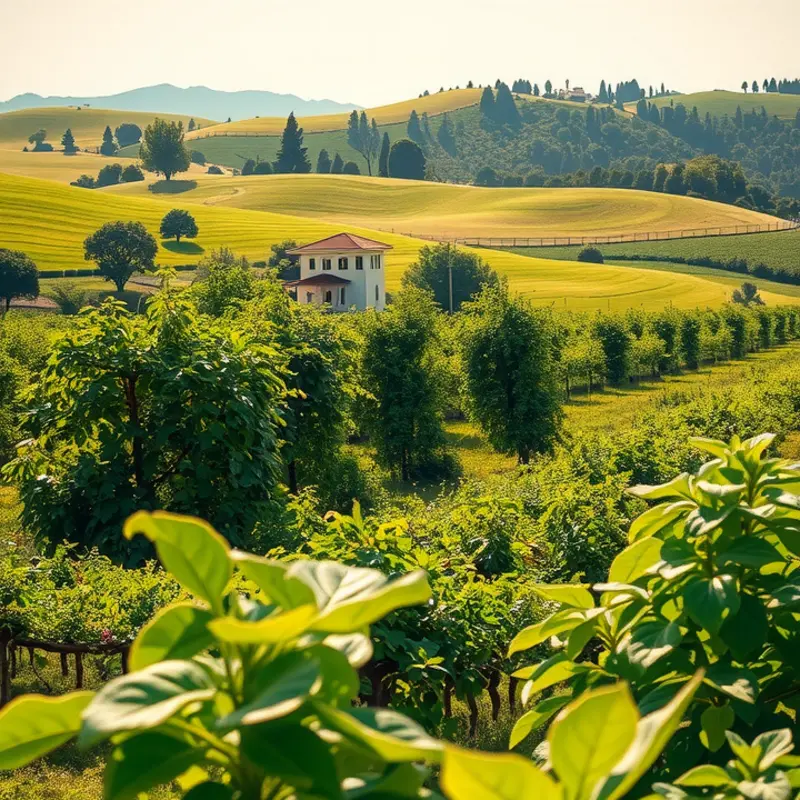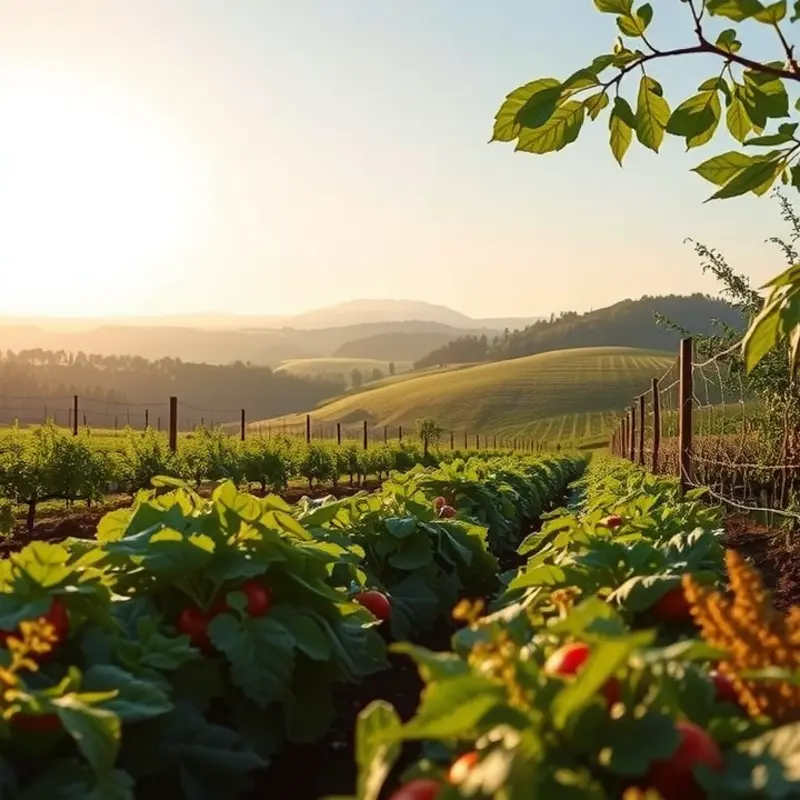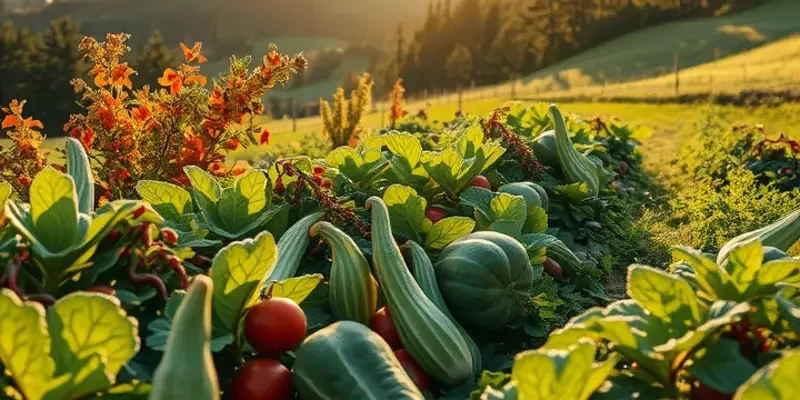The world of culinary traditions is a rich tapestry woven with seasonal flavors and regional specialties. Each harvest brings unique ingredients that shape local dishes, reflecting the culture and history of the people. Exploring seasonal dishes provides insight into not only the ingredients used but also the traditions and stories rooted in each region. This exploration takes us on a delectable journey through vibrant dishes that celebrate the essence of each season, uncovering how they connect us to nature and the communities around us.
Spring Delights: Freshness from the Fields

As spring emerges in all its glory, kitchens across the globe awaken to a bounty of fresh produce. With landscapes transforming into verdant expanses, culinary traditions harness this vitality, producing dishes that capture the essence of renewal. In regions famed for their vibrant springs, local dishes spotlight ingredients such as asparagus, peas, and tender herbs, providing a sensory delight enriched with the season’s fresh promise.
In northern Europe, particularly in Germany and France, asparagus reigns supreme. Known as ‘Spargelzeit’ in Germany, this season celebrates the tender white asparagus, often steamed and paired with buttery hollandaise sauce. This delicacy is eagerly anticipated, marking spring’s arrival with its delicate, nutty flavor. Across the border in France, green asparagus features prominently in dishes like quiche and tarts, adorned with chèvre and fresh herbs.
In Italy, spring ushering in the first tender peas, or ‘piselli,’ is celebrated by incorporating them into classics like ‘risotto alla primavera’. The risotto, simmered slowly, allows peas to burst with sweetness, intermingling with subtle hints of mint and lemon zest. These ingredients, combined with Carnaroli rice, create a decadent yet vibrant dish that captures the fleeting charm of spring.
Venturing to the Far East, Japan welcomes spring with ‘nanohana’, the flowering buds of the rapeseed plant, used in various dishes. Nanohana is lightly blanched and dressed with vinegar or soy sauce, bringing a gentle bitterness balanced by umami flavors. Meanwhile, Korean cuisine flourishes with ‘namul’, seasoned vegetable dishes using tender spring greens like ‘dureup’ or Japanese angelica tree shoots. Cooked quickly, they retain their fresh, crisp texture, symbolizing renewal and growth.
As the season unfolds in the Southern Hemisphere, Argentina’s early spring yields the first strawberries, symbolizing a sweet contrast to the verdant greens. Deserts like ‘tarta de frutilla’ celebrate the strawberry harvest, where luscious berries top a creamy custard filling nestled in a buttery crust. This seasonal delight mirrors the hope and vitality spring represents.
Considering the season’s abundance, it’s important to harness this fresh produce sustainably. To minimize waste, check out low-waste cooking prep strategies that help you make the most of these precious, fleeting ingredients.
Ultimately, embracing spring’s bounty through these culinary expressions builds a connection not only with nature but also with cultural traditions. Each regional dish encapsulates the seasonal transformation, enriching our plates and palettes with spring’s lively medley of fresh flavors and textures. As you savor these seasonal compositions, remember that they represent more than sustenance—they are a tribute to the earth’s annual renewal.
Autumn Bounty: A Harvest of Flavors

As the trees don their vibrant colors and a chill seeps into the breeze, autumn unveils its gastronomic charm with an abundance of flavors. This season is a tribute to nature’s generosity, offering a splendid variety of produce that has nurtured cultures and cuisines worldwide. From the robust oranges and deep greens of squash and pumpkins to the crisp and sweet allure of apples, these ingredients are more than just food—they are symbols of comfort and resilience in the face of change.
In Italy, autumn is a time to celebrate risotto alla zucca, a creamy and satisfying rice dish starring the humble pumpkin. Simple yet profound, this dish marries the earthy sweetness of pumpkin with the subtle nuttiness of Parmigiano-Reggiano. A dash of sage infuses the dish with a warm, fragrant note, making it a quintessential autumn plate that soothes the soul.
Traveling northeast to Germany, we encounter Apfelstrudel, a beloved dessert that transforms autumn apples into a flaky, spiced delight. Thin layers of pastry encase a filling that’s both tart and sweet, generously seasoned with cinnamon and sugar. Baked to a golden perfection, it captures the essence of a crisp autumn afternoon—comforting and invigorating in equal measure.
Across the Atlantic in North America, autumn’s culinary emblem is undoubtedly the pumpkin pie. With its spiced aroma and velvety texture, pumpkin pie graces tables from Thanksgiving through the end of the year. The harmonious blend of cinnamon, nutmeg, and cloves evokes warmth and celebration, a sweet nod to the harvest’s culmination.
In the Asian region, particularly Japan, kaki no ha zushi reveals an inventive way of leveraging autumn ingredients. Preserved with persimmon leaves, this sushi variant features fish and rice, adapting well to autumn’s cooler days. While the leaves impart a subtle fragrance, they also highlight a broader culinary practice of extending food preservation—a technique steeped in practicality and tradition.
For those seeking to explore these autumnal wonders while minimizing waste, consider low-waste cooking techniques that embrace the entire ingredient, honoring both the food and its environmental origins. Preserving fruit peels for teas, repurposing vegetable skins for broths, and mindfully portioning are all ways to savor autumn flavors without surplus.
Autumn’s culinary palette is as varied as its landscapes, offering dishes that not only fill the belly but also tell stories of communities, their histories, and their innovative use of the harvest. By embracing the flavors that this season brings, we partake in a global celebration that warms not just our kitchens but our very sense of connectedness.
Final words
Seasonal dishes are more than just food; they are a reflection of culture, history, and community. Each dish tells a narrative that connects us to the earth and to each other, celebrating the unique flavors of different regions. By exploring seasonal cooking, food enthusiasts can foster a deeper appreciation for the artistry of global cuisines, encouraging us to enjoy meals that honor the natural rhythms of our world. As each season arrives, let the flavors inspire your cooking and prompt you to venture into new culinary explorations.








